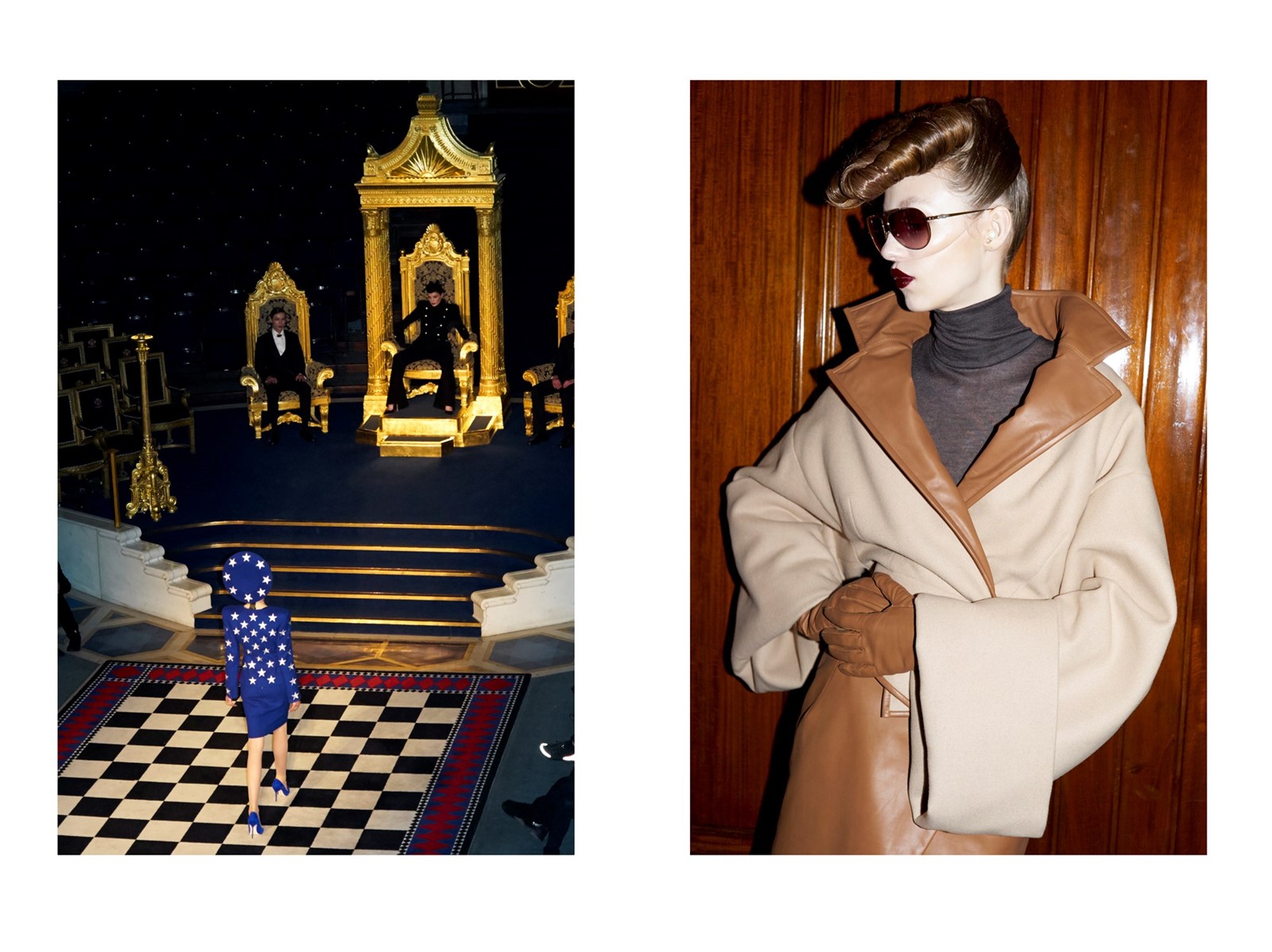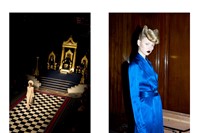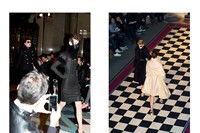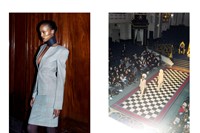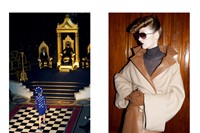Last week, Hillary Clinton launched her new T-shirt range ‘Made For History’: “a limited-edition collection from fashion's biggest names, designed to help elect the first woman president of the United States.” Including the likes of Marc Jacobs (who made his A/W16 finale bow wearing a T-shirt in support of her) and Tory Burch (surely, the people’s choice), she was consolidating a statement that we’ve all been aware of for some time: when it comes to fashion, she’s pretty savvy. Over recent years, Clinton has managed to reformulate her public persona from scorned woman to power player and, without turning a show review into a political diatribe, her ability to augment public perception is nothing if not terrifyingly impressive. Gareth Pugh’s most recent runway was a testament to her prowess but, rather than its painfully perfect coats and buttersoft leathers endorsing her or offering a presidential wardrobe, they emphatically challenged her methods of manipulation – from the impact of the big-business corporations who fund her campaign to the deliberate formation of her wardrobe.
“This season is an exploration of codes of power, of women with the real power” Pugh explained. “It’s not a celebration of them, it’s not saying that Hillary Clinton is an aspirational person, it’s more of an investigation of what makes these women these women.” But, once you place political allegiances to one side, deconstructing “the visual codes of raw female ambition” through the prism of Hillary Clinton is a thoroughly relevant endeavour for any fashion designer, and one that Pugh proved he was qualified to examine.
Corporate Cannibalism
As the lights dimmed, Matthew Stone’s remix of Grace Jones’ Corporate Cannibal rung out through the hallowed Masonic halls where Pugh elected to present this season’s offering: “I’ll make you scrounge, in my executive lounge… sanitize, homogenize, vaporize you.” If the severe cuts of suits paired with Hannibal Lecter masks that subsequently appeared on the runway weren’t sinister enough for one to understand that this wasn’t just an homage to power bitches, then Jones’ words certainly cleared things up. There was a merciless strength to the clothes Pugh sent out; they were sharply cut and analogous to the silhouettes we’ve come to understand as signifiers of female strength: eighties executive to the max, even the models’ cheekbones horrifyingly, hysterically high.
“I’ll make you scrounge, in my executive lounge… sanitize, homogenize, vaporize you.” – Grace Jones
But, after the high-life of eighties executives was the ’87 crash and, if recent climes ought to remind us of anything, it’s that corporation breeds cannibalism; both fashion and the world at large seem to be eating themselves from within. Clinton herself has built a career funded by the same big businesses that her newfound populism claims to counter (Exxon and Chevron alone have donated over $26 million to the Clinton Foundation), and her affiliation with global conglomerates is inextricable in spite of her best efforts and, in a global economy, at the expense of us all. “You pay less tax, but I’ll gain more back,” growled Jones as Pugh’s Clinton-inspired women marched out wearing his own, sinister version of business wear. Pugh’s money-hungry maneater wasn’t just eating men, she was eating mankind.
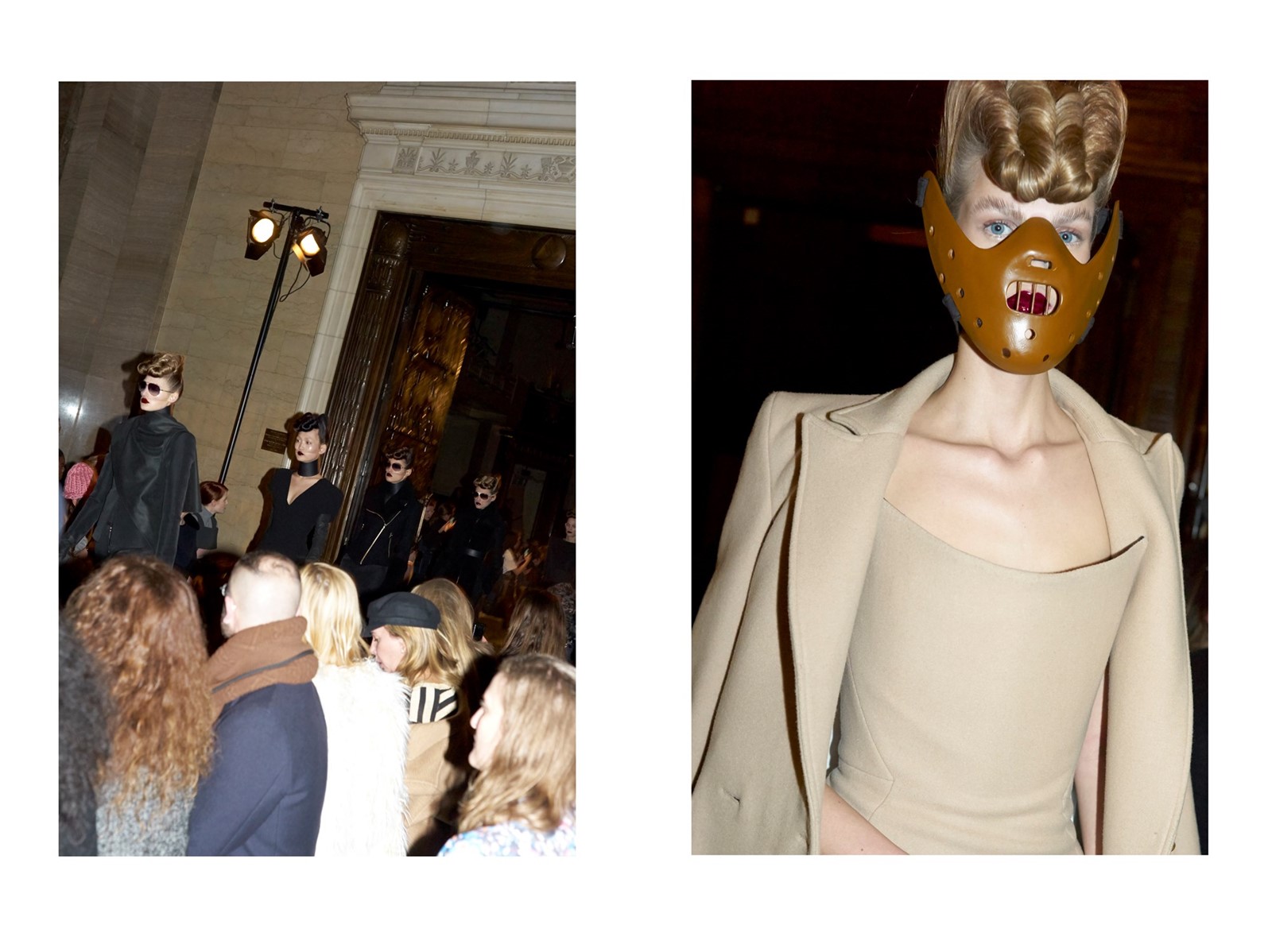
The Death of Power Suiting
“The era of the power suit as the only way for professional women to dress is long gone” wrote Suzy Menkes in The New York Times in 2009 – and one would hope that she is right, that rather than simply masculinising dress, women in power can exist on their own terms; to play by misogyny’s rules is to tacitly perpetuate it. But, in spite of her pantsuit renown, Clinton's decision to veer away from becoming the fashion-conscious face of politics (she has certainly abandoned the Donna Karan and Oscar de la Renta of her first-lady past) is certainly a deliberate one; in her bid for candidacy, she has dramatically adjusted her appearance to match those she stands beside on the podiums. As Robb Young aptly notes in his book Power Dressing, she has "sacrificed too much to emerge as a politician prepared to push the style envelope. She wasn't about to put her career in jeopardy for the sake of expanding the repertoire of what's acceptable for political womankind." In a political sphere, to be a woman who cares about her clothing is to be seen as weak and, although she was crisply tailored, for A/W16, Pugh’s dressed in beige and camel and brown, breaking out only to put on a stars and stripes blue – a distinct move from the sparkling sequins and shimmering copper pennies of last season.
“The era of the power suit as the only way for professional women to dress is long gone” – Suzy Menkes
“I always have a desire to throw on a load of bells and whistles but this season was about restraint,” explained Pugh. “The best example for me is that when Margret Thatcher used to go to a function, she would all be all organza and frills, and this isn’t that side of politics. It’s the business end of the operation.” And for A/W16, Pugh's woman was all business: although her clothes were perfectly formed, they were crisp and clean and slick. There were no patterns besides a Prince of Wales check; the only accessorisation was thoroughly ominous leather gloves and Globetrotter attaché briefcases chained to wrists using 24 carat Smith & Wesson handcuffs. “How did [Hillary Clinton] escape the issue of clothes? By taking a page from her opponents’ playbook and making it her own. By boring everyone into silence,” wrote Vanessa Friedman earlier this year and, while Pugh's woman offered plenty to talk about, there wasn't an obvious splendour: the devil was in the details.
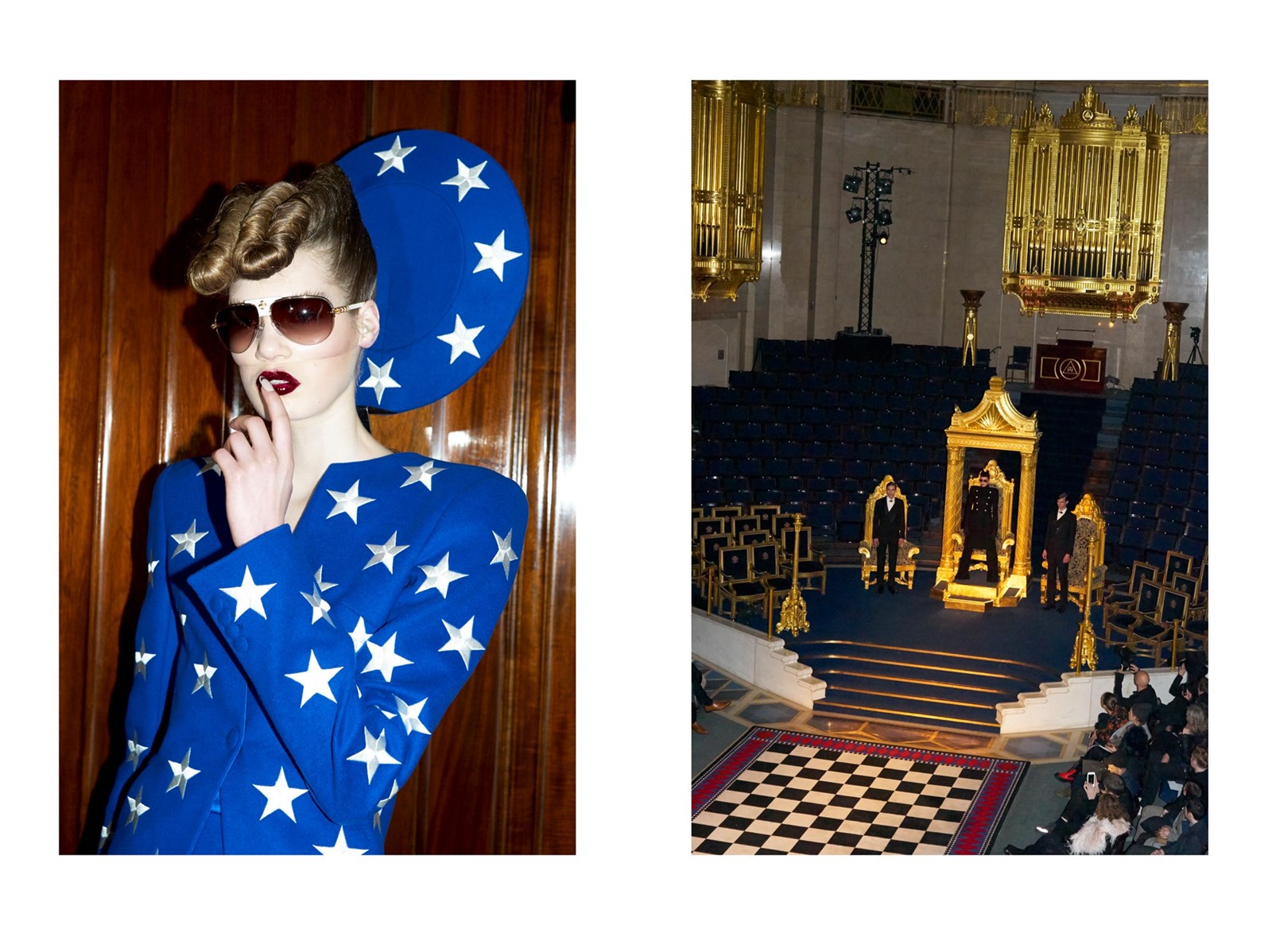
Conspiracy Pearls and Visual Codes
“The idea of doing a womenswear show in a space that was reserved for men is an interesting one,” explained Pugh, “female membership to the Freemasons is a comparatively recent thing.” And, alongside forming an apt backdrop for his narrative of a woman operating in a man’s world, there was a pointed reference to the history of American politics: “George Washington was one of the first Freemasons, so the collection is somewhere between the idea of the symbolism of power dressing and that of the Freemasons.” But, before we all start folding dollar bills up to make pyramids, the codification of power dress is one rife with meaning – you might not know what you're seeing, but it's certainly saying something.
“It's a dog eat dog world, and she's got to the top by playing the game” – Gareth Pugh
When researching the collection, Pugh found Germaine Greer’s 2008 article on power pearls: an 800-word exploration of their subliminal messaging in American politics (the book she references, Madeline Kunin’s Pearls, Politics and Power is 250 pages on the same theme). As Greer, Kunin and Pugh point out, there are no coincidences to be found in the dress of political figures – something particularly true for women – and each decision signifies a conscious message. Sarah Palin would have the golden buttons chopped off her Valentino coats to avoid appearing too grand; Margaret Thatcher’s Ferragamo handbag achieved its own political renown; when Condoleeza Rice "needs special clout, she dons a particular string of big heavy pearls" wrote Greer. Pugh’s women wore conspiracy pearls in their ears, a simultaneous reference to Illuminati gossip and visual codes of dress. What he seemed to be reminding us with this collection was that, as he said post-show, "it's a dog eat dog world, and she's got to the top by playing the game." Then, as the show notes proclaimed, "power often comes from fear and solutions to intraceable problems are rarely rooted in star spangled heroism but, rather, in making hard choices." The hard choices are not those that pay dues to a system of corruption, of misogyny and inequity: they are those that offer a radical alternative. That is not what Clinton is offering, in spite of her efforts to imply that by virtue of being female she offers something different. It's the same story, with a different packaging: packaging that needs thorough examination.
